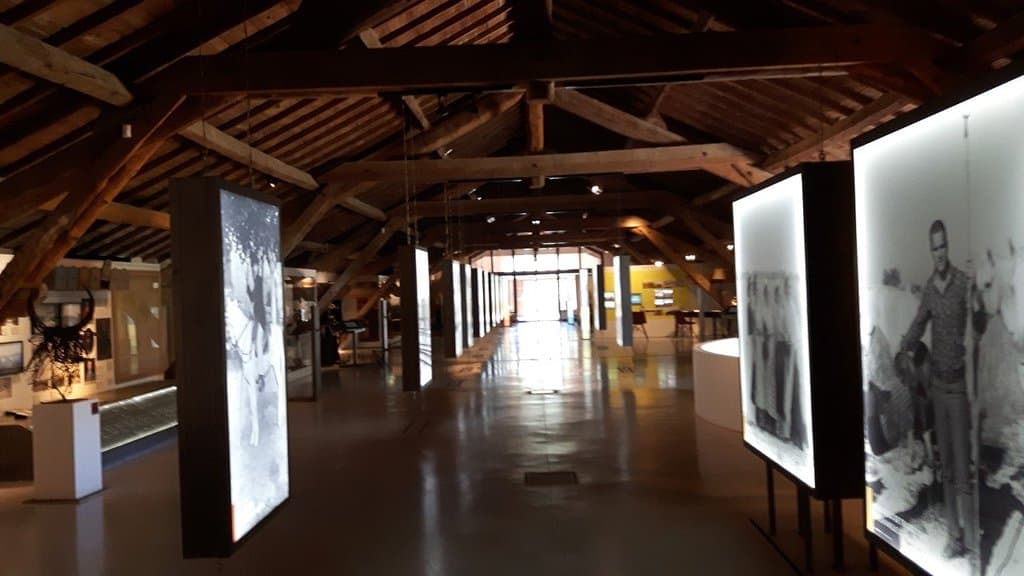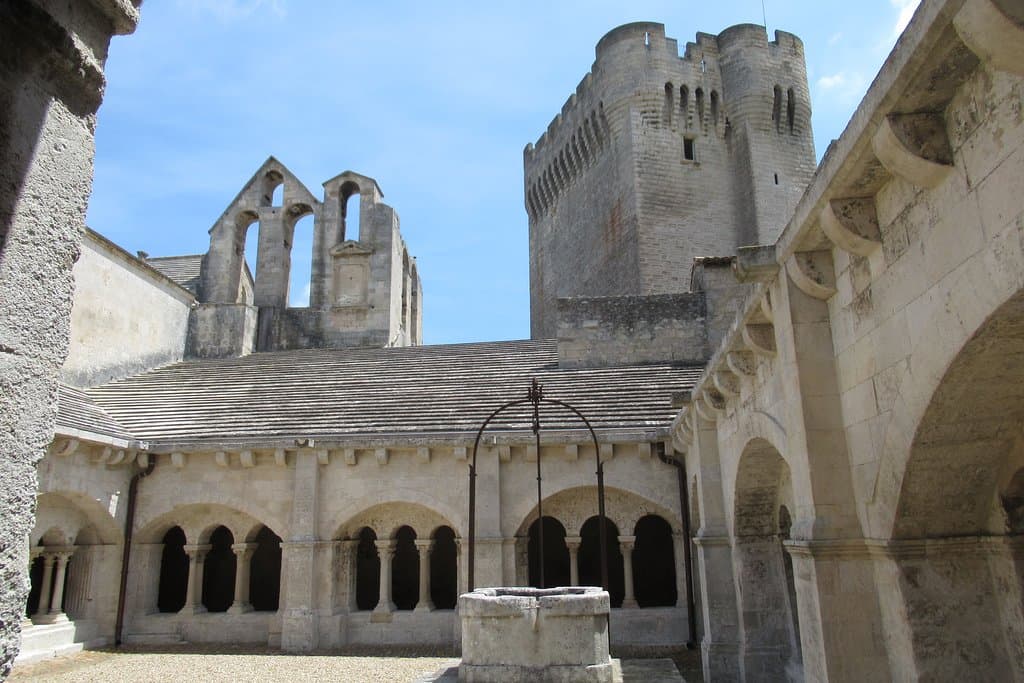
Camargue Museum Saintes-Maries-de-la-Mer
Discover the unique farming and cowboy lifestyle of the Camargue, its rich biodiversity, and the traditions of its people. Explore scenic trails and w...

Highlights
Must-see attractions

Social
From TikTok & Reddit
Best Time
Pleasant weather, fewer crowds

Camargue Museum Saintes-Maries-de-la-Mer
Best Time
Pleasant weather, fewer crowds

Highlights
Must-see attractions
Discover the unique farming and cowboy lifestyle of the Camargue, its rich biodiversity, and the traditions of its people. Explore scenic trails and wildlife.
"Nice little museum that gives a good context to the amazing area in which it resides."

🚶♀️ Explore the Trails
Don't miss the trails behind the museum for wildlife spotting and experiencing the Camargue landscape.
🚗 Consider a Car
Public transport is limited; a car or bike is best for exploring the region.

Highlights
Discover the most iconic attractions and experiences

Camargue Culture & History
Discover the unique farming and cowboy lifestyle of the region, its flora, and fauna. Understand how people thrived in this unique landscape.

Camargue Landscape Trails
Explore the expansive trails behind the museum, offering a chance to view wildlife and experience the flat, unique Camargue terrain.

Local Traditions
Gain insight into the traditions of the Camargue, including its equestrian heritage and the vibrant local culture.
Plans like a pro.
Thinks like you
Planning Your Visit
Timing is Everything
Getting Around the Camargue
Best Times
Insider Tips
from TikTok, Instagram & Reddit
🚶♀️ Explore the Trails
Don't miss the trails behind the museum for wildlife spotting and experiencing the Camargue landscape.
🚗 Consider a Car
Public transport is limited; a car or bike is best for exploring the region.
☀️ Avoid Summer Heat
Summer can be very hot with fewer animals visible outside.
🗣️ Limited English
Exhibits may have limited English translations.
Tips
from all over the internet
🚶♀️ Explore the Trails
Don't miss the trails behind the museum for wildlife spotting and experiencing the Camargue landscape.
🚗 Consider a Car
Public transport is limited; a car or bike is best for exploring the region.
☀️ Avoid Summer Heat
Summer can be very hot with fewer animals visible outside.
🗣️ Limited English
Exhibits may have limited English translations.
🐎 Local Culture
Immerse yourself in the unique equestrian and farming traditions of the Camargue.
What Travellers Say
Reviews Summary
Visitors find the Camargue Museum offers a good introduction to the region's unique ethnographic history and its connection to the landscape. While the museum itself is described as 'okay' by some, the expansive trails behind it are consistently praised for their natural beauty and wildlife viewing opportunities. The staff are noted as being lovely, though limited English translation in exhibits is a drawback for some.
"It was okay, I think it was an interesting museum. We travelled there from Arles and I would generally say that the ethnographic museum in the city centre covers all the information included in this one and has similar exhibits. The walk is pretty but the planked section was closed for our visit. I would say the walk would take around 4 hours. We were also using public transport which made it more challenging as the buses are once an hour.
The staff were really lovely though!"
Morgan Court
"In the summer, it's not that much fun. No animals outside, just big, hot plains. So check the period before you go. The museum is kind of okay."
Mónika Krajcsovszki
"Nice little museum that gives a good context to the amazing area in which it resides, the history of its people and of its environment, flora and fauna. I went in there knowing little about the camargue and when it was over I could appreciate a lot better why and how people were able to thrive in such a unique place since the dawn of civilization."
T C
What People Like
What People Dislike
Frequently Asked Questions
🚇 🗺️ Getting There
You can travel from Arles to the Camargue Museum by car or bike. Public transport options exist, but buses are infrequent, running only once an hour, which can make it challenging.
Exploring the wider Camargue region is best done with a car or a bicycle, as public transport is not always reliable or frequent.
Saintes-Maries-de-la-Mer, where the museum is located, is accessible by road. If coming from Arles, it's a scenic drive through the Camargue landscape.
Information on specific parking facilities at the museum is not widely available, but it's advisable to check local signage or inquire upon arrival, especially if driving.
Yes, cycling is a popular way to explore the Camargue, and you can cycle to the museum. The trails behind the museum are also great for biking.
🎫 🎫 Tickets & Entry
Opening hours can vary seasonally. It's recommended to check the official museum website or contact them directly for the most up-to-date information before your visit.
Admission fees are generally reasonable. Some visitors mention it being included in a city pass, suggesting potential cost-saving options.
Booking tickets in advance is usually not necessary for this type of museum, but it's always a good idea to check their website, especially during peak tourist seasons.
Information regarding accessibility for visitors with disabilities is not extensively detailed online. It's advisable to contact the museum directly to inquire about specific facilities.
While not explicitly stated, some visitors have mentioned using city passes, which might offer discounted or bundled entry to attractions like the Camargue Museum.
🎫 🧭 Onsite Experience
The museum focuses on the ethnographic history of the Camargue, showcasing the farming and cowboy lifestyle, local flora, and fauna. It provides context for the region's unique environment.
While the museum offers educational content about the region, its focus on farming and cowboy life might be more engaging for older children or adults. The surrounding trails offer more active exploration.
Information on guided tours is not readily available. However, the museum's exhibits and the surrounding trails offer a self-guided experience.
A visit to the museum itself might take about an hour, but if you plan to explore the trails behind it, allocate at least 3-4 hours for the entire experience.
Information about Wi-Fi availability is not provided. It's best to assume it might not be available and download any necessary information beforehand.
📸 📸 Photography
Photography policies can vary. It's generally permitted for personal use, but flash photography might be restricted to protect exhibits. Always check for signage.
The Camargue landscape, its wildlife (horses, flamingos), and traditional architecture offer stunning photographic opportunities. The trails behind the museum are particularly scenic.
Drone usage is often restricted in natural parks and near cultural sites. It's crucial to check local regulations before flying a drone in the Camargue region.
The 'golden hours' around sunrise and sunset offer beautiful light for landscape and wildlife photography. Midday can be harsh due to the strong sun.
Yes, local festivals like the Feria in Arles offer vibrant scenes for photography, but always be respectful of participants and ask for permission when appropriate.
For Different Travelers
Tailored advice for your travel style
👨👩👧 Families with Kids
To make the most of a family visit, combine the museum with an exploration of the surrounding natural areas. Pack plenty of water and snacks, and be prepared for the heat, especially during warmer months. The flat terrain makes it suitable for family bike rides if your children are comfortable cycling.
🚶 Budget Travelers
To save money on transport, consider cycling to the museum and exploring the region on two wheels. This not only cuts down on fuel or public transport costs but also offers a more immersive experience of the Camargue. Pack your own food and drinks to avoid expensive tourist traps, especially if you plan to spend a full day exploring the trails.
Deep Dives
In-depth insights and expert knowledge
The Heart of the Camargue: Culture and Lifestyle
Beyond the human element, the museum also highlights the rich biodiversity of the Camargue. You'll gain insights into the local flora and fauna, understanding how this unique environment supports a variety of wildlife. This dual focus on human culture and natural heritage makes the museum a comprehensive introduction to what makes the Camargue so special.
Many visitors find that a visit to the museum significantly enhances their appreciation of the surrounding area. It provides a deeper understanding of the traditions, such as the equestrian culture and the 'bouvine' (bull-running) events, which are still very much alive in the region.
Exploring the Camargue Beyond the Museum
These trails are a great way to connect with the environment that the museum describes. You can observe the unique landscape, which is characterized by wetlands, salt marshes, and vast open spaces. It's an immersive experience that brings the exhibits to life, allowing you to see the habitat that has sustained the Camargue's distinctive way of life for generations.
For those who enjoy nature and wildlife, dedicating time to explore these trails is highly recommended. It's a chance to see the Camargue's natural habitat up close and appreciate the very environment that has shaped its culture and traditions.
Navigating the Camargue: Travel Tips
For a more rewarding experience, it's highly recommended to have your own transportation. Renting a car is a popular option, allowing you to explore at your own pace and reach more remote areas. Cycling is also a fantastic way to see the Camargue, especially given its flat terrain. Many visitors enjoy cycling between attractions and along the scenic routes.
When planning your visit, consider the season. While summer offers warm weather, it can be intensely hot, and some wildlife may be less visible. Spring and autumn generally provide more comfortable temperatures for exploring both the museum and the surrounding natural areas.




Social
from TikTok, Instagram & Reddit